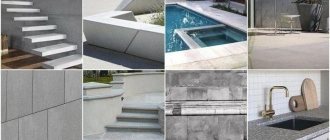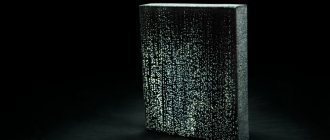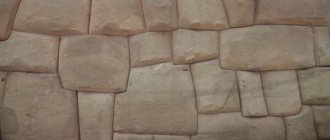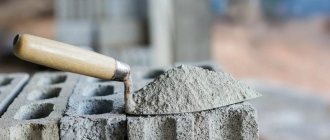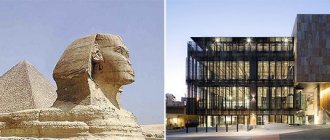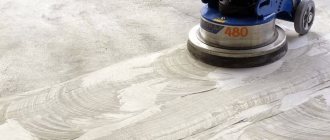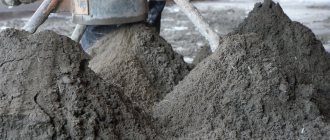In modern construction, in approximately 90-95% of cases, the most popular and in demand material is concrete of different grades and different strength classes. Its main advantages are plasticity in liquid form and excellent strength of the stone during hardening, which, in fact, is needed for architectural structures of various types. The purpose of this article is a short training course on how to make architectural concrete with your own hands and why it can be used at home.
What is art concrete
Art concrete is a plastic, durable and easy-to-work material that is used where ordinary concrete will not allow the task to be completed. Archstone resembles plasticine, so you can use it to create a variety of decorative elements, complex shapes for decorating construction sites and sites - figures, stucco molding, statues, columns, openwork latticework, park sculptures, etc.
When asking questions about whether architectural concrete is relevant when performing specific work, what it is and how to make it, you can briefly explain it this way: it is ordinary concrete with various admixtures that provide useful characteristics of the material: increase durability, add color, texture, etc. d.
Artistic concrete is produced from a sand-cement mixture, adding various additives to regulate decorative properties and technological parameters - pigment to achieve the desired color, level of strength, ductility, resistance to temperature changes and moisture, hardening time, etc.
Main components of the material:
- Water
- Portland cement
- Quartz sand, marble chips (coarse or fine aggregate)
- Pigment
- Additives to obtain the desired properties (modifying, reinforcing)
In appearance, the material is similar to natural wild stone; it allows you to beautifully design buildings and territories, significantly saving on decorative finishing. Like other types of concrete, archstone is standardized by state standards: GOST 26633-2015, GOST 25192-2012. Plastering and finishing composition can be purchased in specialized stores or made independently according to a recipe.
Characteristics and composition of the material
Any art concrete has high strength. On average, it is 39 MPa 3 days after setting and 59 MPa after 28 days. The whiteness of the finished composition varies between 68-85%, the minimum frost resistance is 100 cycles of freezing and thawing. Art concrete sets quickly and gains strength after 15 hours.
The basic composition of the material is not fundamentally different from classical solutions. Art concrete includes a binder component - Portland cement of white, light gray color M400 or M500 strictly without foreign inclusions and lumps. M600 and M700 cements are used much less frequently for the production of mixtures. The composition also includes quartz sand, which can be partially (up to 5-10%) replaced with granite, marble chips or glass powder.
In addition, art concrete may include other ingredients:
- fine-grained crushed stone, pebbles, shells of a certain shade (to add decorativeness);
- plasticizers, curing regulators, additives to enhance frost resistance, water repellents;
- fiberglass or other reinforcing fibers.
Pigments can be added to the mixture so that it immediately acquires the desired color. Also, purified water in a certain amount is used to prepare the material. In addition to the main binder (cement), art concrete may also include other components with similar properties:
- Acrylic (acrylic resin). The finished material dries quickly, has high elasticity, is easier to tint, and is suitable for rooms with unstable humidity and temperature. The service life of art concrete increases to 10-15 years.
- Minerals - clay, lime, gypsum. They make the composition more decorative, increase abrasion resistance, and provide fire safety.
- Silicates. Provide the highest resistance to damage and chemicals, and repel water. They are used if art concrete is intended for outdoor use.
- Silicone. Gives plasticity, strength, resistance to moisture and ultraviolet radiation.
How is architectural concrete different from ordinary concrete?
The basic composition of both types is the same. As already mentioned in the previous section, these are crushed stone, sand, water, plasticizers.
- To obtain architectural concrete (art concrete), colored pigments are added to the raw material to add color, ceramic chips for texture, or colored glass.
- To ensure that the color is uniform and consistent, special levelers are added.
- More plasticizers are also often included if the material will be created into complex shapes.
Decorative concrete in the interior is part of it; it looks complete and expressive, in harmony with the overall decor.
Stone in the interior of the pool
Project: decorating a diving tower in a swimming pool under an artificial waterfall.
A new project begins with a conversation: after all, every person has their own understanding of beauty. After this, the artist provides the sketch to the customer. The sketch depicts the smallest details of the future product.
The main artist is present at all key stages of the project, often independently performing some of the tasks in order to realize the idea perfectly.
This is what a sketch of a future project looks like on paper. In the same way, only brighter, it will become reality.
© Stone always goes well with an existing design, if you follow the rule of three - use no more than three materials in decoration. Too many colors and textures will make the interior look like a patchwork quilt, too few - boring and inexpressive.
Natural light from large windows highlights the texture of the stones, creating an atmosphere of a rocky coast. In cloudy weather or in the evening, this function is performed by hidden lighting.
Live plants within reach and artificial ones at the top of the 8-meter rock added realism to the composition.
Our work is both art and science. We approach each object as artists, and the creation process as scientists.
We completed the project in just four months, and the result was such a man-made miracle.
An ordinary pool has turned into a real corner of wild nature with waterfalls, vegetation and caves.Types of art concrete
Decorative art concrete is the brainchild of modern times. The building material is made from a basic cement base and additives, dyes and other polymer compounds are added to the composition. Which give the plaster a beautiful appearance and attractive performance characteristics. Therefore, the material belongs to polymer concrete.
Art concrete goes on sale in 2 varieties:
- Microcement. The composition is a polymer-cement mixture. It completely lacks quartz inclusions. It fits perfectly on metal, wood, plastic, ceramic surfaces.
- Microconcrete. A cement-based mixture with the addition of quartz chips, various polymer dyes and additives. The composition is resistant to high temperatures, has good plasticity, does not absorb any odors at all, and is hygroscopic.
According to the type of binding material, art concrete exists in the following variants.
| Acrylic | It is based on acrylic paste. Plastic and universal. The composition dries quickly and is painted in various shades with pigmented paste. It is used in rooms where the humidity is quite high. Tolerates temperature changes well. Easy to clean. Will last at least 10 years. The disadvantages include low vapor permeability and fire hazard. |
| Silicate plaster | The presence of liquid glass at the base places this type of art concrete among high-strength materials. It has a water-repellent surface and is therefore often used for exterior decoration of buildings. Will last 20 years without repair. |
| Mineral | Art concrete is produced in powder form. Consists of: mineral particles, stone and lime chips, clay. The plaster is easy to apply, it can withstand sub-zero temperatures and humidity, has increased abrasion resistance, and is environmentally friendly. The material is breathable and completely non-flammable. Before using mineral art concrete, the surface is coated with a primer. All irregularities must be filled with putty. Will last 10 years. |
| Silicone | It is based on resin components. The durable and flexible coating is quickly applied. Obvious advantages include: durability, easy care, does not fade under the influence of ultraviolet radiation, easily tolerates humidity above normal, and adheres firmly to the base. Contains coloring pigments, antifungal additives, fillers. It is used for finishing the house, both inside and outside. The solution does not need to be mixed; it is sold ready-made. Before application, the wall is treated with a primer. |
Children's room design for a girl
Art concrete on the market is represented mainly by foreign origin. There are also domestic production options. For example, art concrete vgt. Composition including dolomite chips. When applied it gives a rich dark shade.
Decorative concrete art is often confused with architectural concrete. The second is a cement-sand mixture with the addition of plasticizers. Used for the manufacture of architectural delights: stucco molding, statues, flowerpots, and other objects of complex shape.
Advantages of concrete plaster
The popularity of art concrete is explained by its quality characteristics, special properties and versatility. Plaster is unique and has the following advantages:
- The plasticity and fine-grained composition will facilitate grinding and guarantee a surface with a perfectly smooth horizon;
- Even such a mirror-like smoothness of the surface does not make the material slippery. You can walk safely;
- Does not fade at all under the influence of ultraviolet radiation and is not destroyed;
- The hygroscopicity of art concrete is very low, which prevents the carbonization process. This determines the long service life and preservation of the strength of the plaster;
- Not afraid of high humidity, temperature changes and other environmental influences;
- It has good ductility and is therefore easy to work with;
- Hypoallergenic and completely environmentally friendly composition;
- The variety of coloring pigments and other additives used allows you to approach design tasks creatively;
- Does not shrink when hardening;
- Art concrete does not require any special care;
Another plus is the creation of a unified style when decorating the interior of living rooms and non-residential work spaces. The ability to highlight the common thread of direction in the artistic design of the decor. Therefore, art concrete is chosen by people whose creative potential needs to be realized.
Which is not surprising, because the unique performance characteristics of the coating allow it to be used to embody the most unimaginable pictures, as if to paint a unique masterpiece. Art concrete allows you to realize any creative plans and ideas. The only thing that may be missing is imagination.
